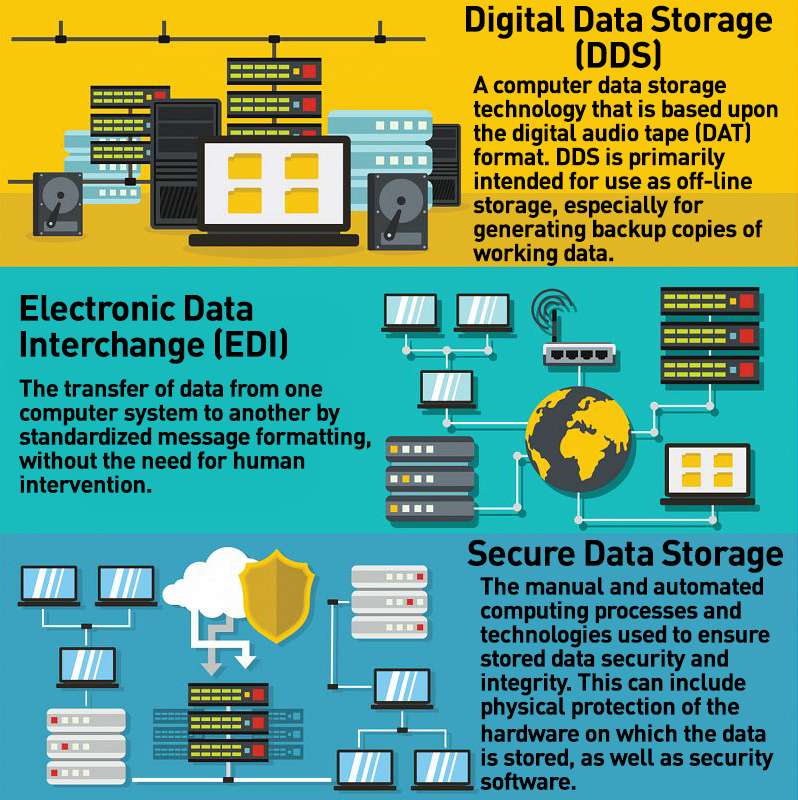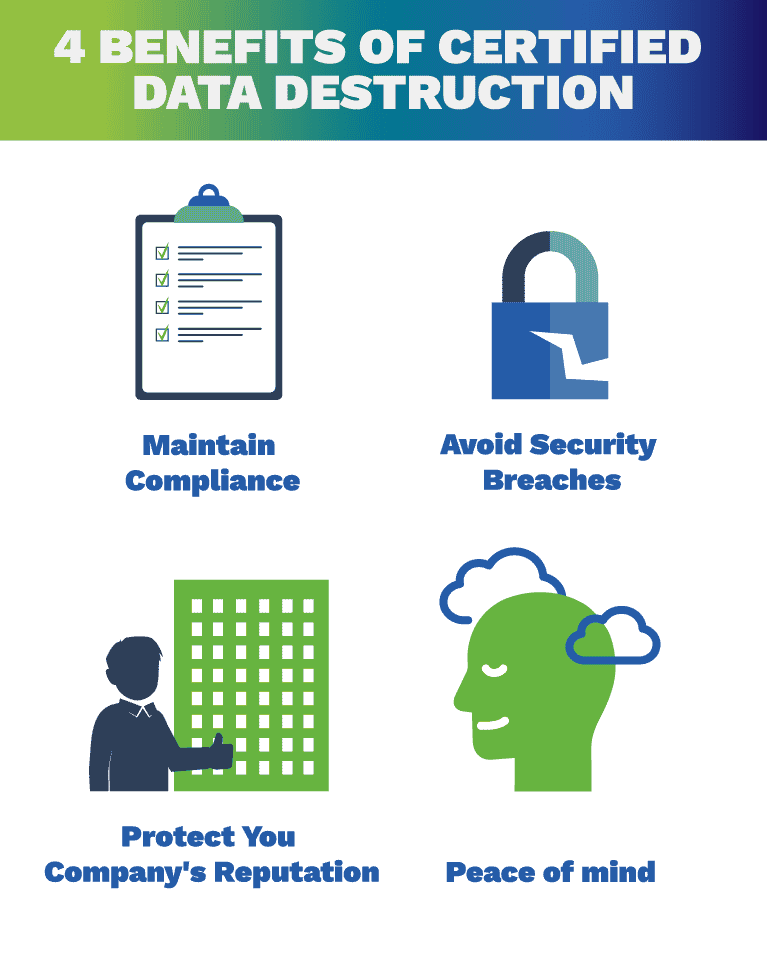How to Incorporate Data Destruction Techniques into Your Cyber Security Strategy
How to Incorporate Data Destruction Techniques into Your Cyber Security Strategy
Blog Article
Exploring the Value of Information Devastation in the Context of Computer Protection Solutions and Protecting Confidential Data
In an era where data breaches are increasingly typical, the significance of efficient data devastation can not be overstated. What strategies can companies apply to boost their data damage procedures?
Recognizing Data Devastation
Information devastation is a crucial component of computer system protection that includes the permanent elimination of data from storage gadgets to avoid unauthorized accessibility and prospective information breaches. In a significantly electronic landscape, companies encounter increased risks connected with delicate info being improperly accessed or manipulated. Reliable information damage safeguards versus these hazards, guaranteeing that confidential dataâEUR" such as client info, copyright, and economic recordsâEUR" can not be recuperated after disposal.
Comprehending the importance of information devastation extends past plain compliance with legal and regulatory frameworks; it is necessary for keeping business integrity and trust fund. When data is poorly handled or inadequately damaged, the repercussions can be extreme, consisting of economic loss, reputational damage, and lawful responsibilities.

Techniques of Information Removal

One common approach is information cleaning, which entails overwriting existing information with arbitrary patterns several times. This technique renders the initial information irretrievable, making it a preferred choice for organizations looking for to secure personal information.
An additional technique is degaussing, which makes use of an effective magnetic field to interrupt the magnetic domains on storage tools, effectively erasing the information. This strategy is specifically effective for magnetic media but is not relevant to solid-state drives.
Physical devastation is one more robust method, crushing or involving the shredding of storage space tools. This approach assurances that data recovery is virtually impossible, making it perfect for highly delicate details.
Lastly, security can function as a complementary strategy to data obliteration. By encrypting data prior to deletion, companies can include an additional layer of protection, ensuring that also if residues are recovered, they stay hard to reach without the decryption trick. Each approach must be picked based upon the level of information level of sensitivity and the details protection needs of the organization.
Legal Compliance and Information Safety
Organizations should navigate a complicated landscape of lawful needs associated with data protection, particularly after implementing techniques of data elimination. Numerous guidelines, such as the General Data Defense Policy (GDPR) and the Medical Insurance Portability and Accountability Act (HIPAA), enforce strict standards on exactly how companies need to deal with and get rid of of sensitive information. Failure to adhere to these regulations can cause substantial lawful effects, consisting of considerable penalties and reputational damage.
Data damage procedures must be thoroughly recorded to show compliance with suitable laws and standards. This documents not only acts as evidence of adherence to legal commitments yet likewise highlights a commitment to safeguarding sensitive information. Organizations should additionally establish clear policies pertaining to information retention and devastation timelines, making sure that information is not held longer than necessary.

Moreover, normal audits and assessments of data destruction techniques are necessary to maintain compliance and adapt to developing legal structures (data destruction). By proactively resolving legal needs, organizations can alleviate threats connected with data violations and show their commitment to data security. Eventually, focusing on lawful conformity in data devastation processes is not just a governing responsibility, yet a fundamental element of a durable data security method
Effect On Company Credibility
The track record of an organization can be significantly influenced by its visit here approach to information destruction and monitoring. In today's digital landscape, where information violations can take place anytime, the failing to appropriately take care of delicate info can result in severe consequences. Organizations that improperly take care of data damage risk revealing private client info, which not only violates privacy legislations however likewise erodes trust fund amongst clients and stakeholders.
A tarnished online reputation can lead to decreased consumer commitment, as customers become reluctant to engage with a business that has shown carelessness in securing their information. Adverse attention surrounding an information violation can have an enduring impact, as prospective consumers could be prevented by the regarded lack of safety. This can cause a direct decline in profits and market share.
Moreover, organizations that prioritize information damage as part of their safety and security strategy can boost their credibility by showcasing their commitment to securing sensitive information. By adopting rigid information monitoring techniques, organizations can not only reduce threats however also position themselves as trustworthy entities in their respective sectors, thereby strengthening their total brand name image.

Ideal Practices for Secure Disposal
Implementing ideal techniques for protected disposal of data is essential for alleviating threats connected with information breaches and making certain conformity with personal privacy laws. Organizations ought to take on a thorough information disposal plan that details procedures for both physical and digital data damage.
For physical data storage gadgets, such as hard disks, shredding or degaussing is recommended to stop data recovery. Furthermore, companies must preserve a chain of custodianship paperwork during the disposal procedure, guaranteeing accountability and traceability of disposed things.
For digital information, utilizing software application that follows sector standards for data cleaning is critical. This software must overwrite existing data numerous times, making recuperation virtually impossible. It is also crucial to confirm the efficiency of the information devastation process through audits or third-party assessments.
Educating workers on secure disposal techniques adds one more layer of safety and security, as human error can typically lead to data exposure. Frequently upgrading and evaluating disposal plans makes sure placement with developing regulations and technological advancements. By executing these finest techniques, companies can considerably minimize the risk of unauthorized information gain access to and boost their overall information defense method.
Conclusion
Finally, information destruction is a basic element of computer system safety and security solutions that makes certain the protection of confidential information from unapproved accessibility. Carrying out reliable approaches of information removal, sticking to lawful conformity, and recognizing the influence on business reputation are vital components of a detailed information security strategy. By adopting finest practices for safe and secure disposal, organizations can promote count on with clients and safeguard sensitive information, inevitably adding to an extra safe digital landscape.
In this content an era where information violations are view it now increasingly typical, the value of efficient data devastation can not be overstated.Information damage is a crucial element of computer system protection that involves the permanent elimination of information from storage tools to protect against unauthorized access and potential data violations. Organizations ought to also establish clear plans regarding information retention and destruction timelines, guaranteeing that information is not held longer than essential.
By proactively addressing lawful demands, organizations can reduce risks linked with information breaches and show their dedication to information safety (data destruction). Inevitably, focusing on legal conformity in data damage processes is not simply a regulative commitment, yet a basic aspect of a robust data security method
Report this page